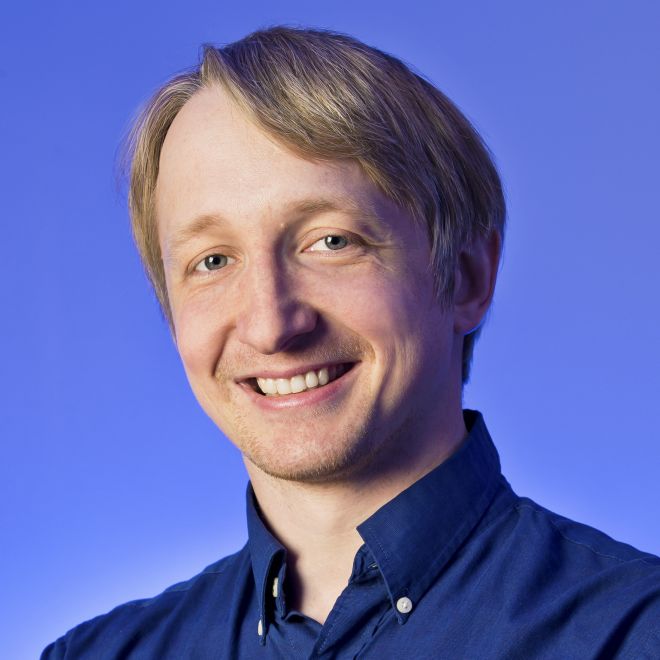
The researchers and engineers studying quantum technologies are exploring uncharted territory. Due to the unintuitive quirks of quantum physics, the terrain isn’t easy to scout, and the path of progress has been littered with wrong turns and dead ends.
Sometimes, though, theorists have streamlined progress by spotting roadblocks in the distance or identifying the rules of the road. For instance, researchers have found several quantum speed limits—called Lieb-Robinson bounds—that are impassable caps on how quickly information can travel through collections of quantum particles. They’ve even developed protocols for quantum computers that achieve the best possible speeds for specific cases. But to make calculating the limits easier, physicists have mostly neglected the influence of disorder. In the real world, disorder can’t always be ignored, so researchers need to understand its potential effects.
University of Maryland researchers including Alexey Gorshkov (in photo), a fellow in the Joint Center for Quantum Information and Computer Science (QuICS), are facing down the impact disorder has on speed limits.
In an article published in June 2023 in the journal Physical Review X Quantum, Gorshkov—joined by researchers in the Joint Quantum Institute (JQI) including Chris Baldwin, a former postdoctoral scholar at Maryland who is now an assistant professor at Michigan State University—described novel methods for pulling insights from the mess created by disorder and identified new types of quantum speed limits that apply when disorder is present.
"We were motivated both by the beautiful theoretical problem of proving and saturating new speed limits and by the implications that our work would have on quantum computers that inevitably have some disorder," says Gorshkov, who is also a physicist at the National Institute of Standards and Technology and a fellow in JQI.
Baldwin (lead author of the paper), Gorshkov and colleagues began by tackling the case of a one-dimensional line of particles, where each particle can only directly interact with its neighbors. They specifically focused on the spin—a quantum property related to magnetism—of each quantum particle. A spin is like a compass needle that wants to point along a magnetic field, but, being quantum, it can point in more than one direction at a time—a phenomenon called superposition.
They also found that their method allowed them to define two distinct types of limits that tell them different things. One they dubbed “almost always bounds” because the bounds hold for almost all the sections of a chain. These limits apply to any sufficiently long stretch of spins even though they might occasionally be violated for small sections of the chain—like if there is an unusual clump of speed demons in the brigade. These limits allow researchers to guarantee conditions, like that a particular spin won’t be disturbed by activity further down the line within a particular time window.
The researchers called the second type of limit “infinitely often bounds” because they are guaranteed to apply to some stretches of an infinite chain but there isn’t a guarantee that the limit will definitely hold for any particular stretch no matter how long a section is being considered. So, these limits are expected to occasionally pop up on sections of the chain and generally lower the limit from that set by the almost always bound—like a car occasionally entering a work zone on the highway. Having an idea of these lower speed limits that are likely to pop up can help researchers to judge the reasonable minimum amount of time to dedicate to getting the bucket all the way across a stretch of the brigade.
The newly defined limits allowed the team members to resolve a lingering discrepancy: The existing Lieb-Robinson bounds had set a higher ceiling than any information transfer protocol had reached. The mismatch could have been the result of either researchers not being creative enough in designing the protocols or them failing to account for something that enforced a lower limit. Accounting for disorder more carefully dropped the theoretical ceiling down to match the speed of existing protocols.
“For a while, we had this gap,” Baldwin says. “The main exciting thing of this work was figuring out how we could completely close this gap.”
The researchers say there is further work to be done exploring the applications of these limits and determining when the two types of bounds have significant impacts.
“The main direction I want to take this going forward is going beyond one dimension,” Baldwin says. “My suspicion is that the picture will end up looking very different, but I think it's still worth having this one-dimensional case in mind when we start to do that.”
—Story by Bailey Bedford, JQI communications group

